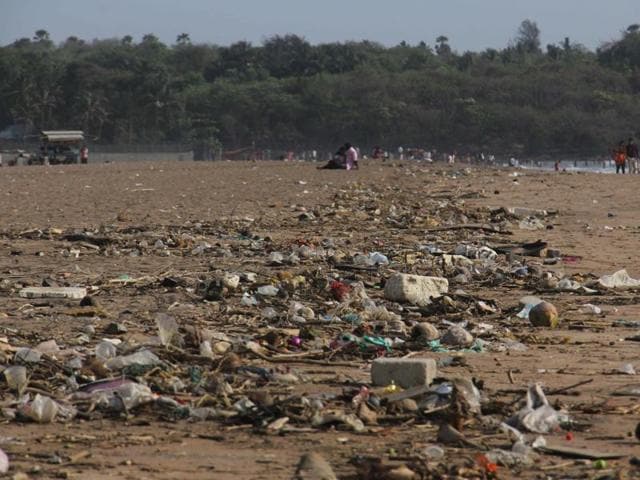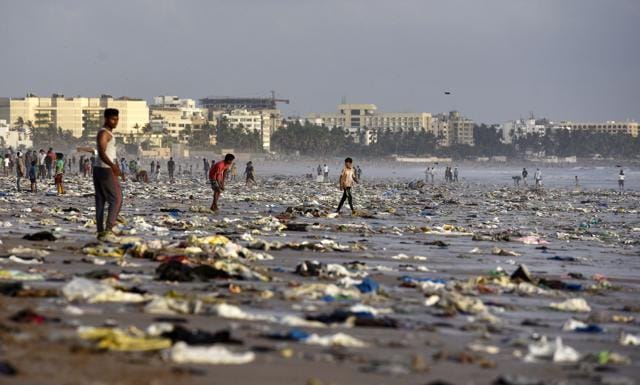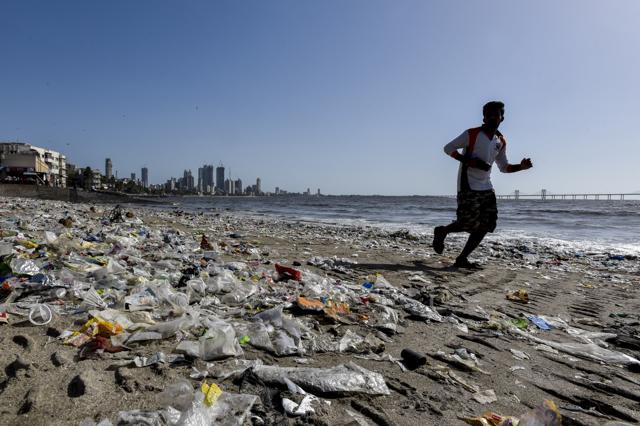Versova to Dadar: How Mumbai’s beaches are drowning in trash
Mumbai’s beaches are facing a garbage crisis with environmentalists estimating that 100 tonnes of trash lies dumped on the beaches at any given moment
Around 10km off Versova beach, Jayant Pawar pulls out his fishing net from the sea to inspect the catch. What tumbles out is a mix of plastic fragments and discarded shopping bags, but very few fish. “We have been forced to travel further into the sea for fish as Mumbai’s coast and beaches are filled with plastic waste,” Pawar said.

Mumbai’s beaches are facing a garbage crisis with environmentalists estimating that 100 tonnes of trash lies dumped on the beaches at any given moment. A study by Mumbai-based ReefWatch Marine Conservation found plastic bags, food wrappers, discarded tyres and styrofoam choking the beaches. From November 2015 to May 2016, the group examined and counted trash at nine beaches in the city — Gorai, Aksa, Madh, Versova, Juhu, Dadar, Chimbai, Erangal and Girgaum Chowpatty – and one on the outskirts — Uttan Virgin. They found Juhu, Versova and Aksa to be the most polluted. Chimbai, Madh and Erangal, called the rocky beaches because of a lower proportion of sand cover, were the dirtiest.

An analysis of the trash found that plastic bags formed the biggest chunk. Fragments of plastic, PET bottles, glass fragments, paper, cardboard, cement bags, clothing, fishing nets, tyres, batteries, food wrappers and automobile scrap were other items. “What we are throwing into the ocean could potentially end up in our stomach. During the study, we observed that plankton – microscopic organisms that are eaten by larger marine animals — were ingesting microplastics – small plastic particles 5-10 microns in size – from the litter, which is a concern,” said Animish Limaye, mainland projects manager, ReefWatch Marine Conservation. “According to our inference, the base of the food chain gets affected because the planktons are eaten by bigger fish, which is consumed by humans.”

A senior official from the Maharashtra Maritime Board (MMB) said inadequate management of garbage and sewage was responsible for the trash on the beaches. While Mumbai’s dumping grounds get around 10,000 tonnes of garbage daily, the municipal corporation’s solid waste management department estimates that 500 tonnes is not collected and ends up in the storm water drains, from where it flows into the sea. Also, 25% of Mumbai’s sewage is not treated before it is discharged into the sea. According to 2015 data from the Ministry of Social Justice and Empowerment Survey of Manual Scavengers in Statutory Towns, human waste from 36,883 of the total 26,65,479 households in the city flow into the drains.
“Currently, we are treating 75% of the city’s sewage across 50 pumping stations,” said a senior official from sewage operations department. “Nullahs that were originally fresh water streams are carrying industrial slurry and domestic waste from households directly to the sea. Slums near the beaches are also dumping their waste,” said the official.

The untreated sewage has also affected the quality of water along the coast. A study in 2015 by the state pollution control board 2015 found that the average level of biochemical oxygen demand (BOD) — oxygen levels crucial for plants and animals to survive in water – was twice the safe limit at Juhu, Versova and Dadar beaches. While Juhu and Versova recorded 10.83 mg per litre, 10.7mg per litre was recorded at Dadar. Water with a BOD reading of more than 3mg per litre is unfit for human consumption and marine life is endangered at levels above 6 mg per litre, according to Central Pollution Control Board guidelines.
Members of the fishing community said the trash and sewage in the sea has caused a 50% drop in business in the last few years. “The city is treating the sea as its dumping ground,” said Damodar Tandel, president, Akhil Maharashtra Machhimar Kriti Samiti. “There has been a massive loss in business because 80% of our catch is trash and the remaining fish have micro-plastics in their stomach.”

N Vasudevan, chief conservator of forest, state mangrove cell, said if citizens need to segregate so that plastic and other non-biodegradable trash does not reach the sea. “Increasing pollution in coastal areas, especially beaches, are a matter of concern. We need to take urgent steps to make beaches attractive and simultaneously protect the biodiversity of these areas,” said Vasudevan, who promoted the study of beach trash.
It is, however, not all bad news.
Some beaches such as Girgaum Chowpatty are relatively free of trash because of regular cleaning, while others like Uttan Virgin and Gorai do not have large settlements that could pollute the beach.
Officials from the Brihanmumbai Municipal Corporation (BMC)’s solid waste management (SWM) department said they are trying to clean the beaches. “We have installed automatic machines to collect plastic waste at all the sandy beaches in the city. The BMC has also employed workers to handpick waste from rocky beaches,” said a senior official from SWM. “Girgaum Chowpatty stands as an example of regular efforts being carried out for beach cleaning.”



